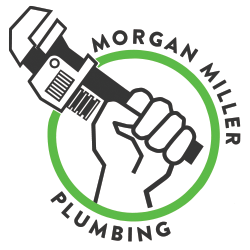Why you need an Expansion Tank
Even thinking about a cold shower can be a miserable experience. Really, what could be worse than standing under the showerhead waiting for hot water to come pouring out and instead you’re greeted by a cold blast of chilling water? Definitely a buzz kill. Thankfully, a well-functioning water heater and thermal expansion tank is one of the best ways to ensure the levels of hot water are available when you want them.

What Happens when the Water Gets Hot?
The act of heating water inside a hot water heater causes a form of natural expansion. This causes pressure to push outward from the inside to throughout the plumbing system.
Kind of like a cartoon character who grows so angry they finally explode, a water heater has the ability to turn into a missile of enormous power if the system’s temperature and pressure, or T&P relief valve, is not in place. The T&P valve is the safety feature designed to relieve high levels of pressure. If this is not in place or working properly a hot water tank could explode, causing smoke, fire or structural damage.
From Open to Closed Systems
Years ago, most cities had “open systems.” This meant water drawn from the city supply could flow both ways. This was helpful for regulating the pressure in a home water heater. When too much pressure built up in the water tank, it could just flow back into the city’s larger water supply. Instances of back flow causing contamination found many cities opting for a “closed system.” This meant water trying to release pressure by flowing backward got stopped by a check valve installed at the city meter. As the populations of cities grew so did the number of “closed systems,” making the need for thermal expansion tanks necessary, according to Mack McClain and Associates.
Dealing with Heat and Thermal Expansion
Any time there’s a build-up of pressure in a plumbing system, there’s also a potential for chronic and continuous dripping of a T&P valve on the hot water heater. In addition, dripping faucets and leaking toilet tank ball cock valves are symptomatic of thermal expansion.

With nowhere for the building pressure to go, water expanding through the heating process creates the potential for serious damage within a plumbing system. Similar to blowing off steam after a stressful encounter or conversation, the water from a hot water heater looks for another place to put water that doesn’t fit in the tank after expansion through heating.
Small but Mighty
The thermal expansion tank is a small vessel installed at the cold supply of the water heater. Inside, a rubber bladder separates the compartments for water and air. When the water expands with heating, the rubber bladder moves to the air side of the bladder, taking up the room it needs to expand. Even as the water replaces the air in the tank, water pressure isn’t affected.
Benefits of a Thermal Expansion Tank

- Eliminates general wear and tear on plumbing fixtures
- Extends the life of the water heater
- Reduces leaks at connections within the plumbing system
• Prevents unnecessary damage to water heater and plumbing system
• Lowers the chance for future costly repairs
• Minimizes maintenance, can be included in annual plumbing inspection
• Adds value to the home
The Gamble: Forgoing the Thermal Expansion Tank
While the codes in many cities (including Kansas City) require the installation of a thermal expansion tank with all new water heaters, you might be wondering if it’s worthwhile to install an expansion tank on an older water heater. For this question, we consulted Sage Restoration, Kansas City’s go-to source for fire, water, mold and biohazard restoration services. Having dealt with the aftermath of way too many burst water heaters in their time, Sage Restoration knows first-hand the importance of having a thermal expansion tank to reduce the pressure and the amount of water dripping from a T&P valve. It’s also protects a home and its inhabitants from fire, smoke or structural damage associated with an exploding hot water heater. Water damage creates associated problems such as standing water and its threat of breeding bacteria and mold growth. Eliminating this possibility can be an important way to reduce the myriad of health risks associated with bacteria or mold growth.
Plumber’s Testing Protocol:
• Check the meter for the presence of a check valve
• Determine current water pressure (water pressure 80 PSI or higher requires a pressure reducing valve (PRV) and a thermal expansion tank is recommended)
• Look for signs of damage from thermal expansion
Do I need a Thermal Expansion Tank?
To determine if a thermal expansion tank could be beneficial to your home or business, call the licensed plumbers at Morgan Miller Plumbing. The Morgan Miller Plumbing team offers more than 100 years of combined plumbing experience. Our team of master plumbers and services technicians have “been there and done that.” Rest assured knowing our experts are here to service all your plumbing needs 24 hours a day, 7 days a week.
Associated Installation Cost and Warranties
The cost to install a thermal expansion tank can range from $300 to $400. Often the expense of the thermal expansion tank is included in the cost of the new water heater. Because of the safety benefits of thermal expansion tanks, many water heater manufacturers require the installation of thermal expansion tanks to receive the full warranty. Warranties can range from one to five years, and the less you pay, the lower the warranty coverage.
Sources: (Morgan Miller Plumbing, Sage Restoration Services and Mack McClain & Associates)

